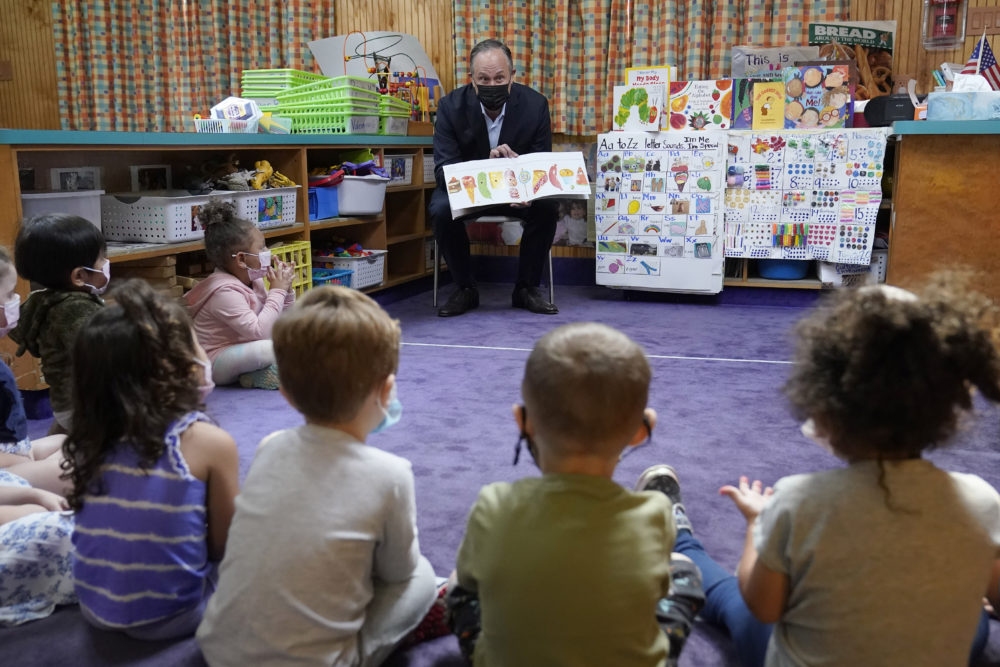Olivia Oborne’s first year of middle school came and went without the sleepovers, dances and school field trips that, in normal times, would feature prominently in the social life of a 12-year-old.
So when Olivia’s mother, Brooke Oborne, received an extra $250 for each of her children this July as part of an advance on her annual child tax credit, she used it to give them an experience they’d never had before. She sent Olivia to a summer sleepaway camp and her two siblings, 10-year-old Evelyn and 6-year-old Charles, to a swim camp.
 After more than a year of isolation and remote learning, many families across the country are doing the same: taking advantage of the windfall of cash provided by the recent expansion of the child tax credit to pay for the in-person social experiences their kids have missed out on during the pandemic.
After more than a year of isolation and remote learning, many families across the country are doing the same: taking advantage of the windfall of cash provided by the recent expansion of the child tax credit to pay for the in-person social experiences their kids have missed out on during the pandemic.
Part of the $1.9 trillion American Rescue Plan passed in March, the child tax credit expansion increased the existing child tax credit from $2,000 to $3,600 for children under age 6 and from $2,000 to $3,000 for older kids. It also broadened the child tax credit’s reach to encompass families who weren’t previously eligible to receive it.
Instead of paying out the entire sum at tax time, though, the IRS is instead sending families advances in the form of monthly installments of $250 or $300 per child. The installments began in July and will continue through December, with the remainder to be distributed as a lump sum later on.
Much of that money has gone to immediate necessities like groceries, rent, school supplies, and debt payments, and researchers have noted a dramatic dip in child poverty and food insecurity rates since the first payments dispersed in July to the families of nearly 60 million children nationwide.
As the pandemic continues to take a toll on the mental health of children and adults alike, some families have prioritized out-of-school learning opportunities alongside the essentials, with an estimated 1.2 million families using at least part of their July check to pay for afterschool programs, according to the U.S. Census Bureau’s Household Pulse Survey.
“We are talking about having our children be involved in sports and other extracurricular activities and the CTC helps make this workable with our budget,” wrote Dave Lester.
When Democratic lawmakers, who passed the expanded child tax credit without the aid of their Republican colleagues, called on their constituents to share how their families were using the payments, parents and caregivers were quick to chime in via social media. STEM camp, said one. Sports fees, said another. Swimming classes, music lessons, band camp.
For many families, opportunities like these would otherwise be unattainable. While the number of kids taking part in afterschool activities has grown over the past decade and a half, this growth is fueled largely by middle class and wealthy families. Children from low-income families, meanwhile, have been disproportionately excluded because of a lack of access to affordable programs.
Oborne, a daycare teacher from Medford, New Jersey, normally stays home to care for her three children during the summer months because of the prohibitively high cost of childcare. For a family whose summers would usually be filled with free activities like library programming, the $1,000 it cost to send all three kids to summer camp would have been out of reach without the extra cash, she said.
Dave Lester, an insurance consultant from Bremerton, Washington, said he and his wife likely would have dipped into their savings if their advance child tax credit payments hadn’t helped cover camp costs for their two children. Now, the couple are thinking about how the extra money can help expand their children’s horizons further.
“We are talking about having our children be involved in sports and other extracurricular activities and the CTC helps make this workable with our budget,” Lester wrote in an email.
Out-of-school activities are increasingly viewed not just as leisure but as essential to a child’s year-round learning, and increasing access to such programs like direct implications for children’s social and emotional well-being, said Tom Rosenberg, CEO of the American Camp Association. The role of these programs becomes even more vital when children have not had the opportunity to build their social and emotional skills alongside their peers.
“We know from what we’re seeing firsthand right now that when kids don’t have in-person time, informally playing with each other or formally in structured learning programs like camp, they lose that practice of those social-emotional learning competencies,” Rosenberg said. “They don’t communicate with each other as well; they don’t feel comfortable around each other; small differences make them irritable and anxious, right on top of the other impacts of being isolated so long.”
Many families who had never previously considered camp an option for their kids enrolled them this year, he said.
For Olivia, certainly, it proved to be a transformative and much-needed getaway.
“She grew a lot,” Brooke Oborne said. “She got to experience a lot of wonderful things, so she came back more confident and sure of herself.”































